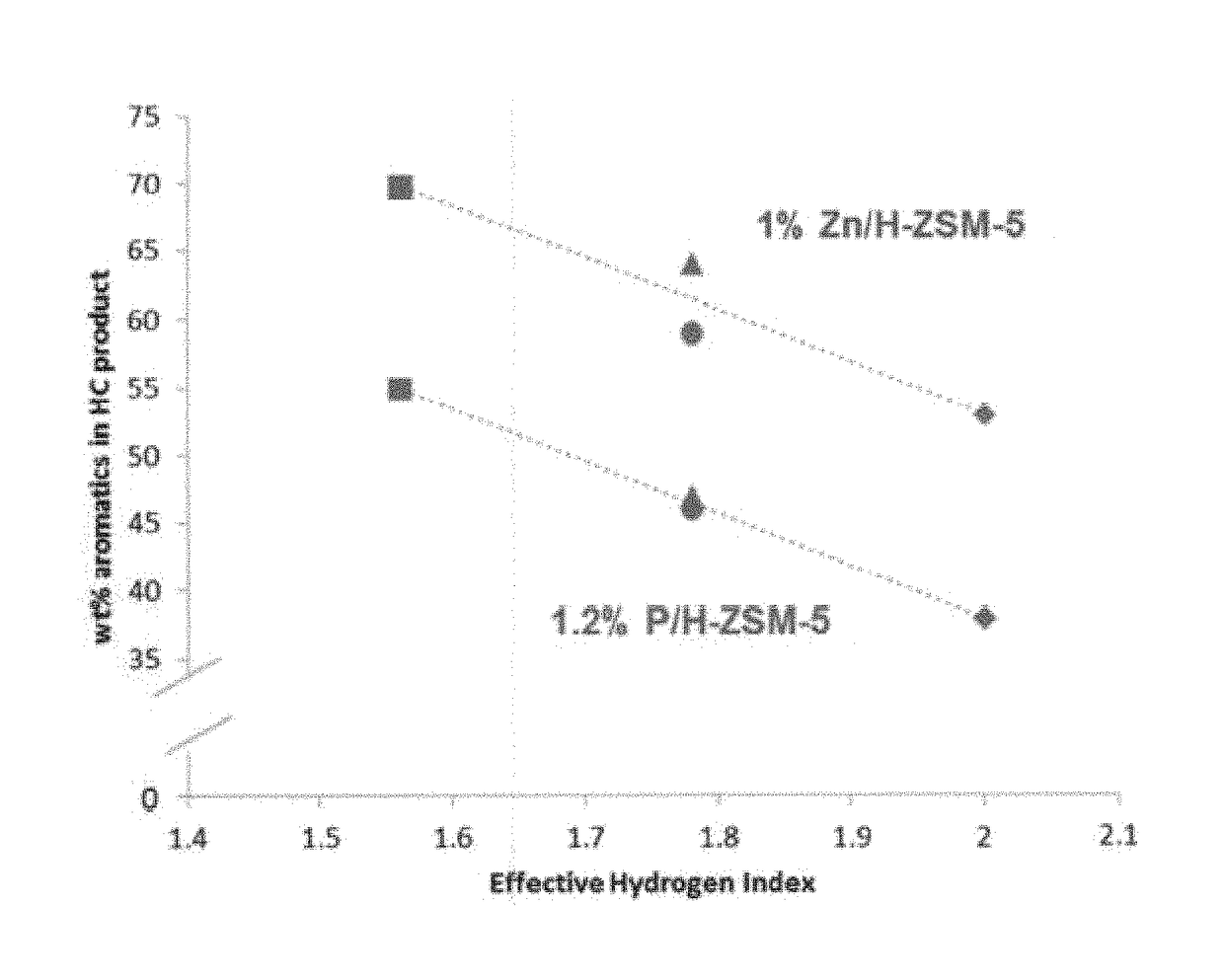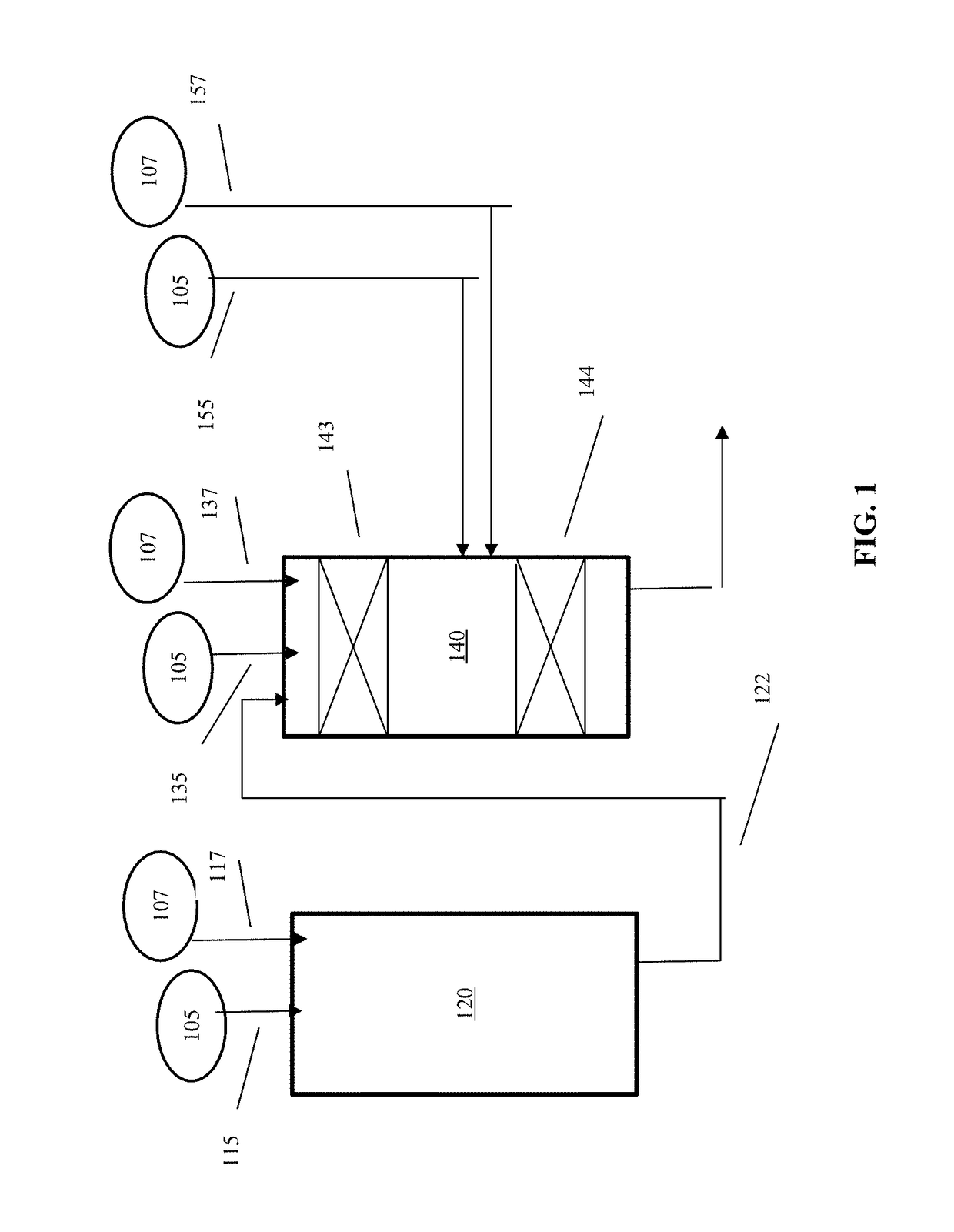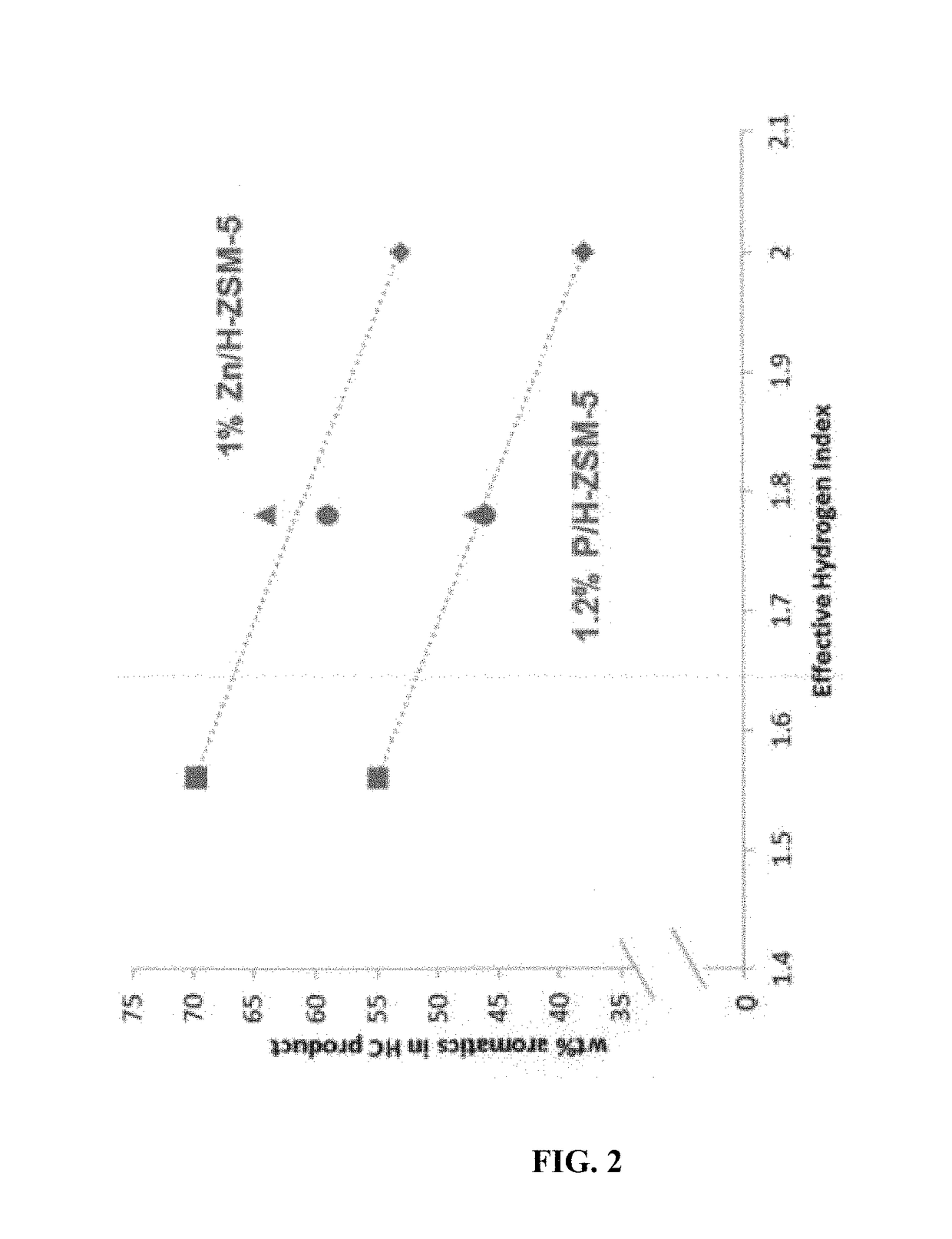Production of aromatics from methanol and co-feeds
a technology of methanol and aromatics, applied in the field of aromatics manufacture, can solve the problems of large equipment footprint, low yield of conventional methods, and low yield of conversion reactions, and achieve the effect of increasing the yield of aromatics
- Summary
- Abstract
- Description
- Claims
- Application Information
AI Technical Summary
Benefits of technology
Problems solved by technology
Method used
Image
Examples
Embodiment Construction
Overview
[0023]In various aspects, methods are provided for improving the yield of aromatics during conversion of oxygenate feeds. An oxygenate feed can contain a mixture of oxygenate compounds, including one or more compounds with a hydrogen index of less than 2, so that an effective hydrogen index of the mixture of oxygenates is between about 1.4 and 1.9. Optionally, the mixture of oxygenates can include one or more ketones or aldehydes having 3 or more carbons. Additionally or alternately, the mixture of oxygenates can exclude compounds having a hydrogen index of less than 1 and / or can exclude carboxylic acids, formaldehyde, and acetaldehyde. An example of a mixture of oxygenates having an effective hydrogen index of between about 1.4 and 1.9 can be a mixture of acetone, butanol (such as n-butanol), and ethanol. Such a mixture of oxygenates can also include methanol and / or dimethyl ether.
[0024]In other aspects, a mixture of oxygenates with an effective hydrogen index greater than ...
PUM
| Property | Measurement | Unit |
|---|---|---|
| pressure | aaaaa | aaaaa |
| temperature | aaaaa | aaaaa |
| temperature | aaaaa | aaaaa |
Abstract
Description
Claims
Application Information
 Login to View More
Login to View More - R&D
- Intellectual Property
- Life Sciences
- Materials
- Tech Scout
- Unparalleled Data Quality
- Higher Quality Content
- 60% Fewer Hallucinations
Browse by: Latest US Patents, China's latest patents, Technical Efficacy Thesaurus, Application Domain, Technology Topic, Popular Technical Reports.
© 2025 PatSnap. All rights reserved.Legal|Privacy policy|Modern Slavery Act Transparency Statement|Sitemap|About US| Contact US: help@patsnap.com



